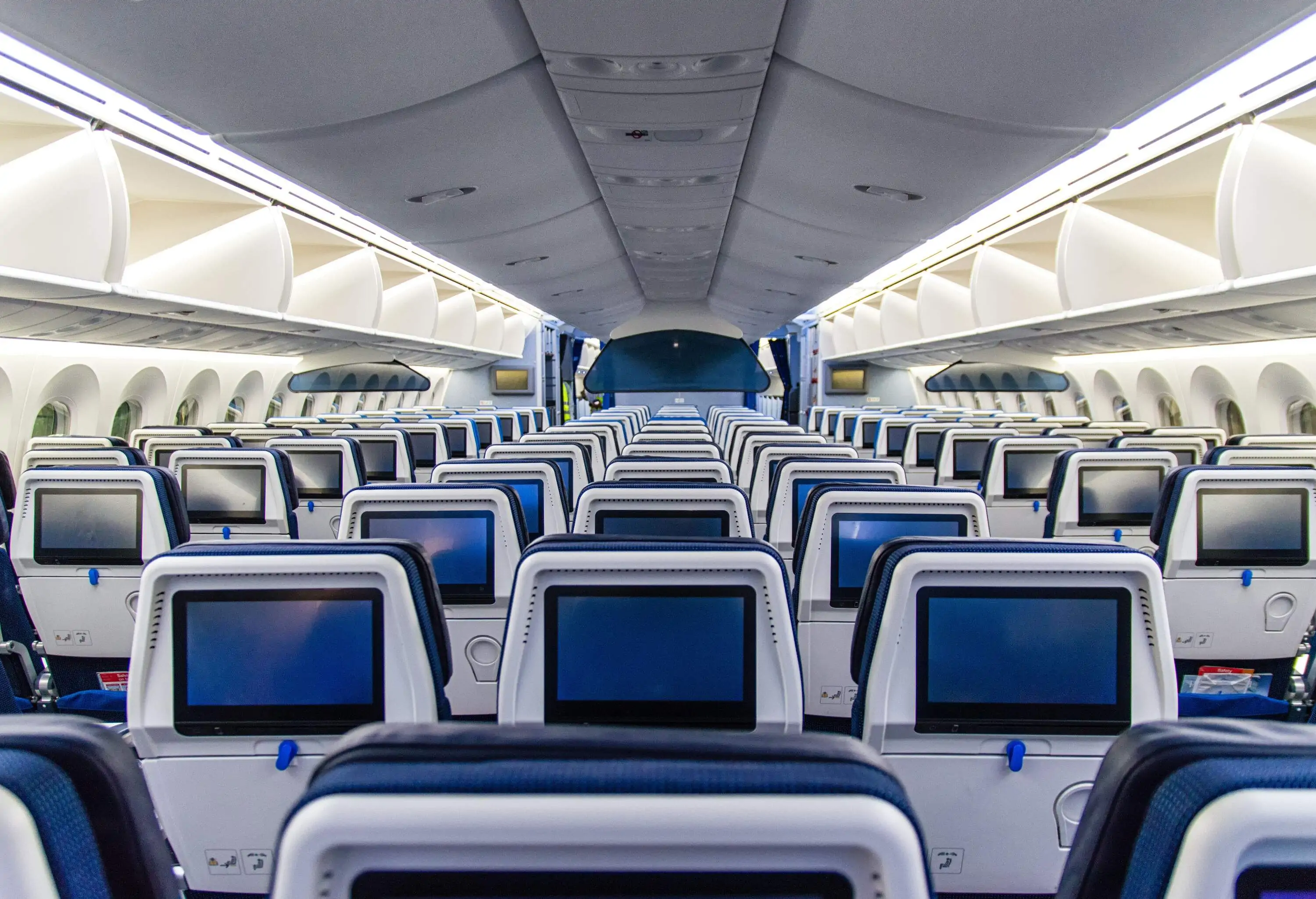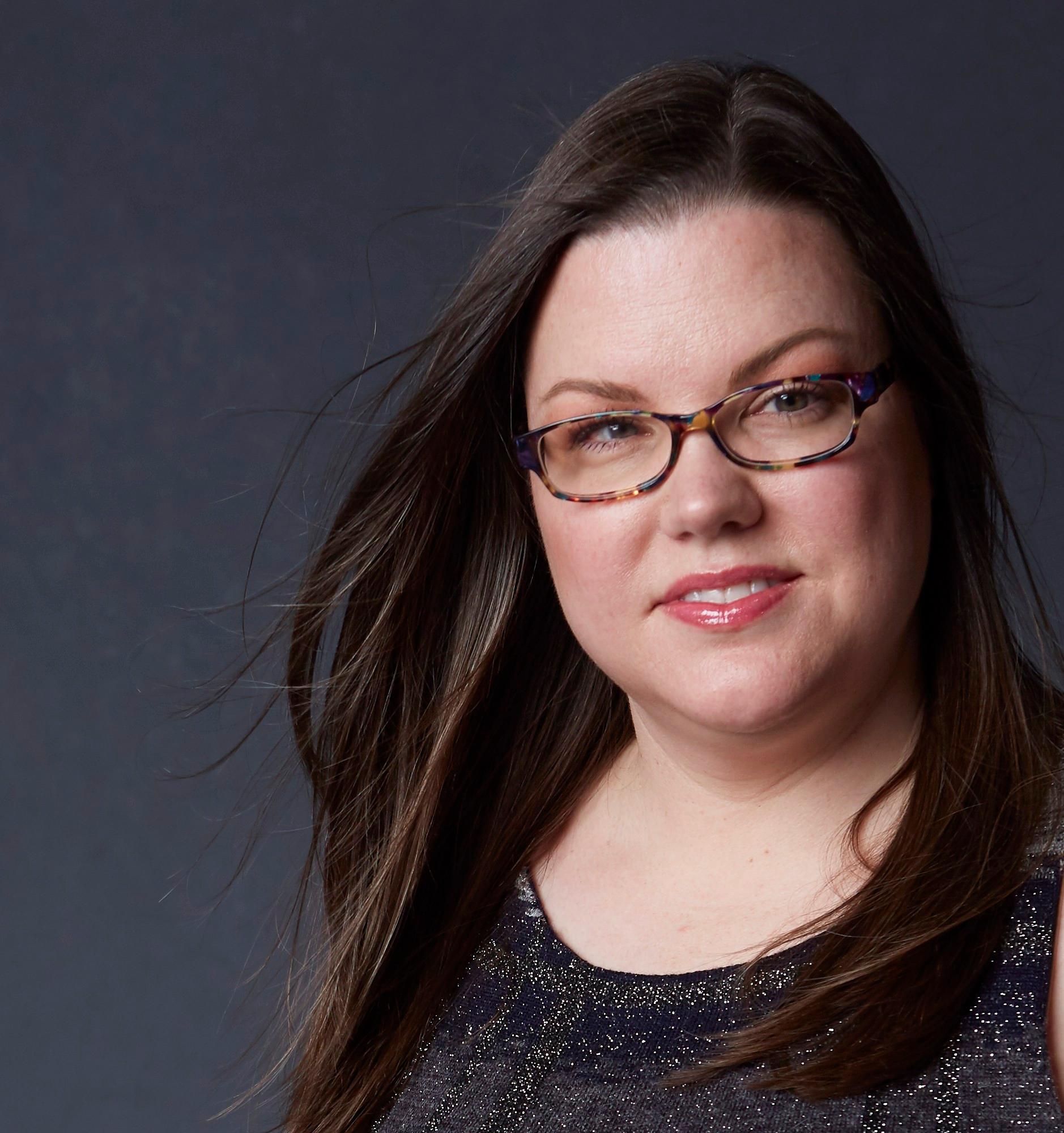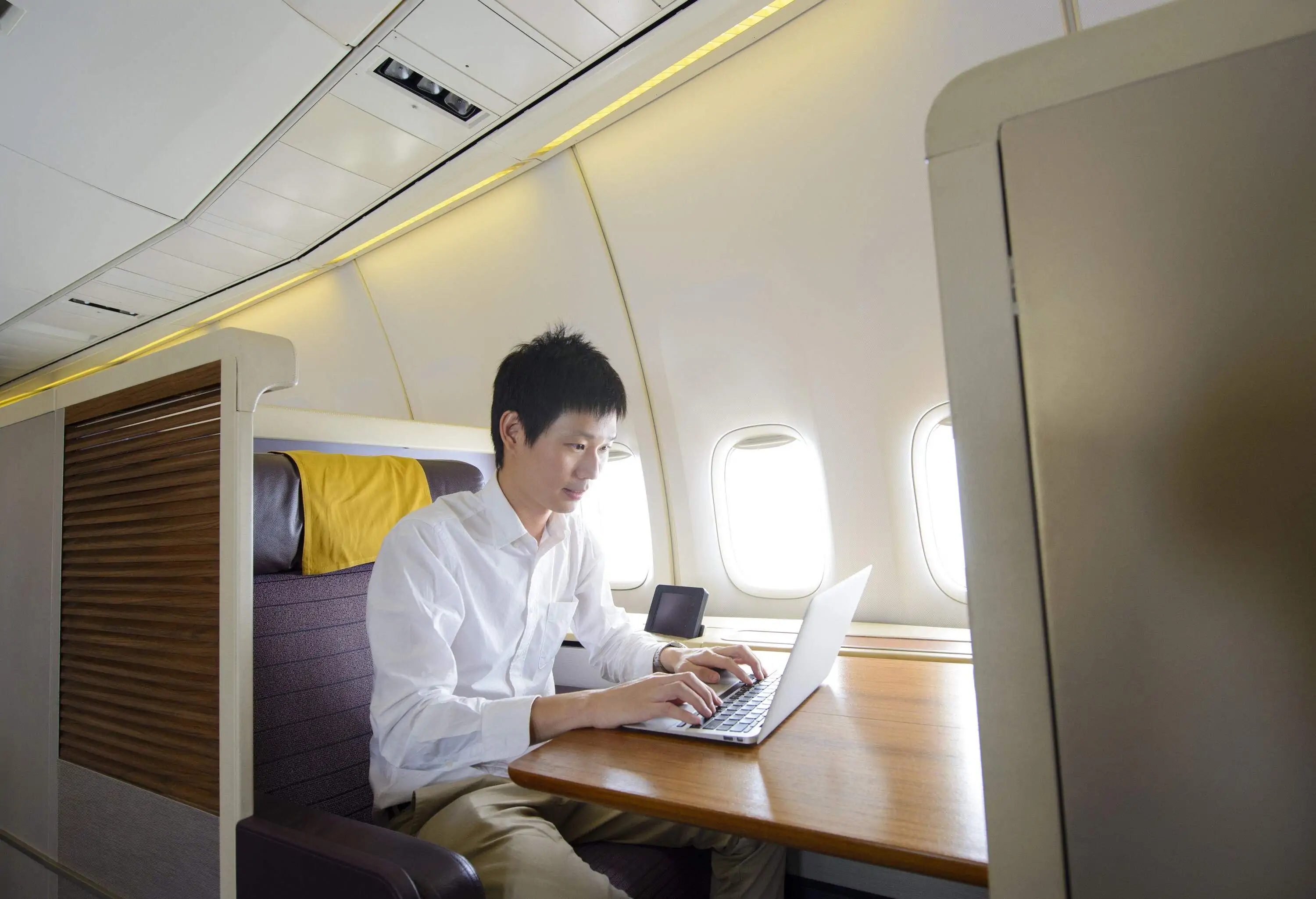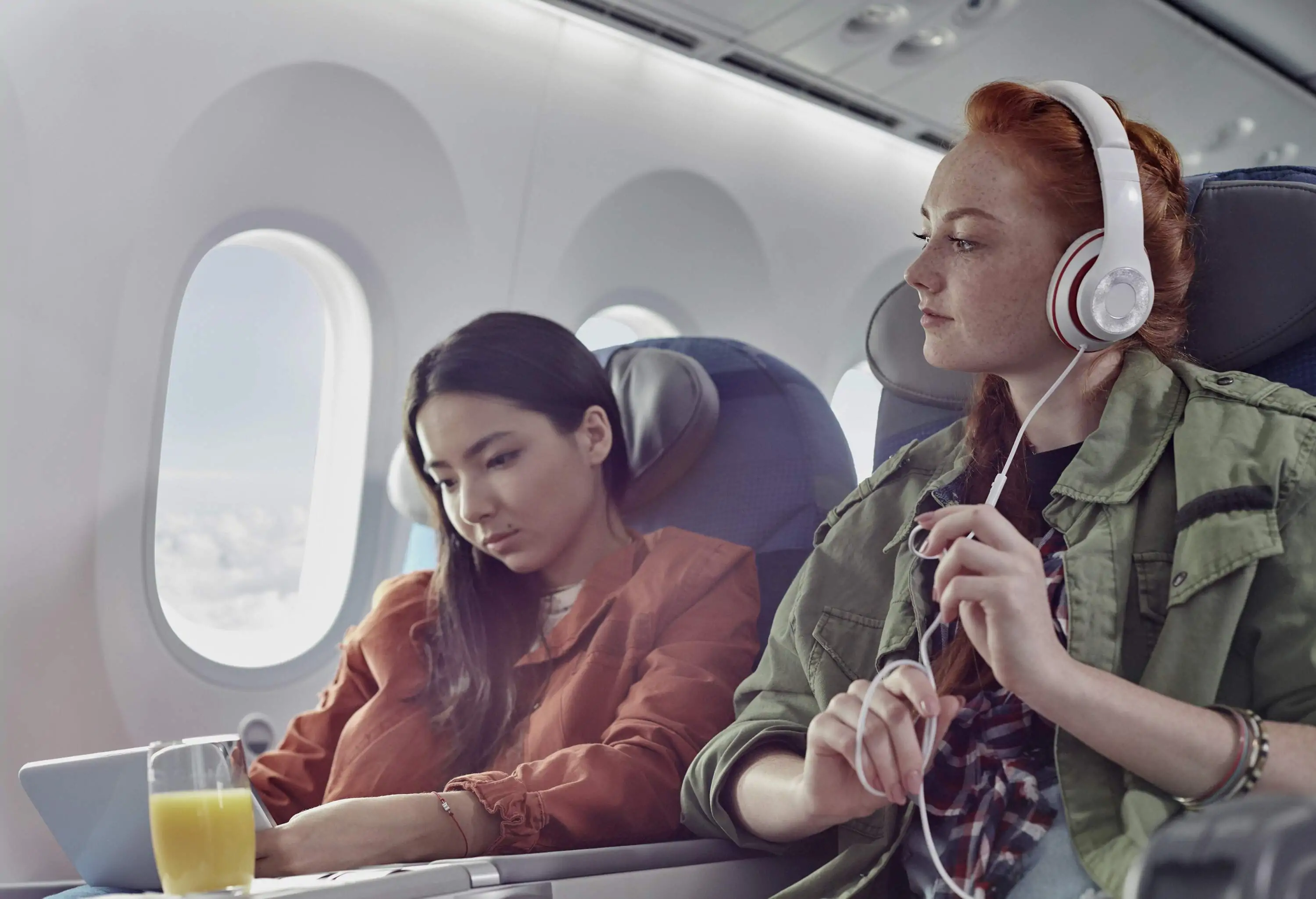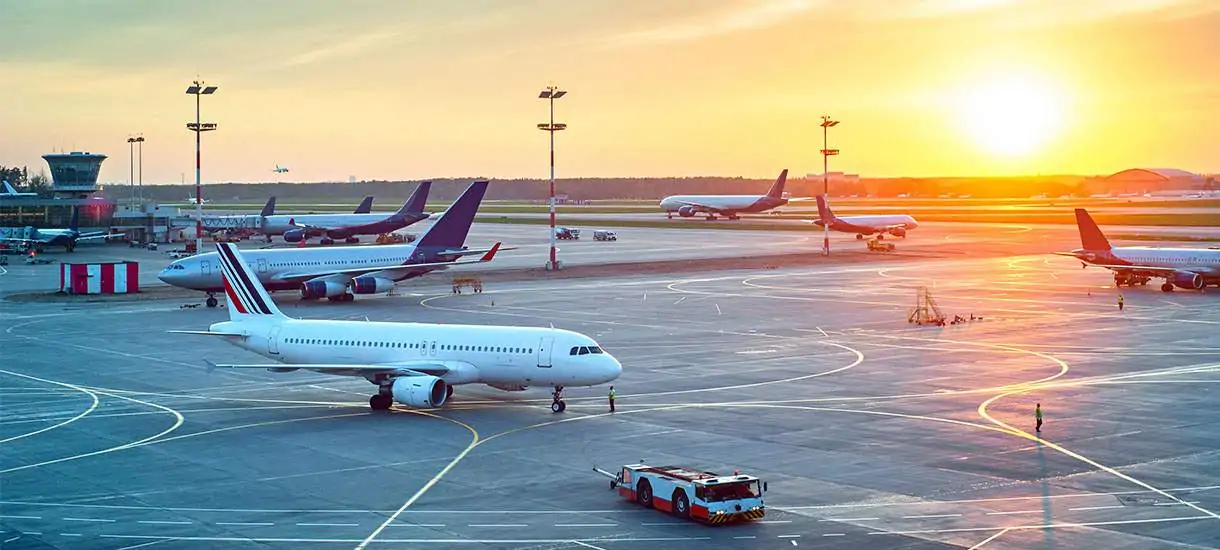Booking a flight and not sure which flight class to buy? We get it. Airplane classes can differ wildly from airline to airline or even between different types of planes on the same airline.
The quality and perks of different fare classes depend on a lot of factors, including flight route, plane model, and more. All of this can get confusing, but we’re here to help you get the most bang for your buck. Read on for our guide to flight classes and how to choose the one that’s right for you.
Understanding and utilizing different flight classes
Since the first commercial flight in 1914, the airline industry has achieved many milestones, including introducing innovative amenities to entice travelers to fly the friendly skies. Today’s flight experience is, of course, vastly different from the inaugural commercial flight in 1914.
One of the most notable differences is how much we pay for our journey and what’s included in the price. Flight prices today are really about getting from point A to point B. Another development has been the introduction of multiple classes of service and the variety of pricing schemes within each fare class, allowing you to only pay for the extras if you choose.
We’ve purchased our fair share of seats across all air carriers, and it’s clear not all seats and classes are equal. Here are answers to frequently asked questions about North American airline classes and what you can expect from each class.
What are cabin classes?
There are four cabin classes offered on most airlines: economy, premium economy, business, and first class.
“In the early days, all seats were first class,” said Seth Kaplan, managing partner of “Airline Weekly,” a subscriber-supported publication about the airline business.
“In the 1950s, airlines including Delta Air Lines, began experimenting with coach flights at off-peak hours – in other words, not first class and coach cabins separated by a curtain, but entirely separate flights. Later they begin offering 2 cabins on the same flight, as we see today,” said Kaplan.
“The number of seats increased after deregulation kicked in, calling for more seats to make more profits per flying mile”, says Stephen Carbone, who has worked for the National Transportation Safety Board (NTSB) as well as the Federal Aviation Administration (FAA).
“Seats were wider because the airlines were subsidized, so they could afford to fly fewer people to more obscure locations. This was changed with the introduction of the hub-and-spoke routing system,” said Carbone. “Destinations were now decided by passenger numbers, which brought about the concept of how many seats can we legally and safely fit.”
Depending on the airline, some seats have shrunk over time while others have remained the same across all classes of service. See our guides on how to pick the best airline seat and which airline has the most legroom to secure the best seat.
What are the different cabin classes?
While there are four airline cabin classes, some airlines only offer one — coach, also known as economy. But a seat in economy class on one carrier can be vastly different from an economy seat on another airline. Many airlines have the same airplane models in their fleets, but they configure the interiors differently, so it’s important to look at the seating map not only for the airplane type, but also the airline you’re flying with.
Using another airline’s map may not be accurate. If your airline doesn’t provide airplane seating charts, call and speak with an agent, who should be able to provide guidance. Let’s break down what you can expect in each class on flights.
Economy class
Whether you call it coach, standard, main cabin, or “cattle class”, economy is the most basic class. The seats here are the narrowest, typically ranging from 16 inches to just over 19 inches wide. The seat pitch, which is the distance from one seat to the seat in front or behind it – what travelers often refer to as “legroom” – ranges from 29 inches to 34 inches. These days, economy offers little more than a seat that will get you from point A to point B.
Some airlines like jetBlue and Hawaiian Airlines offer free snacks, beverages and in-flight entertainment systems in economy. Delta Air Lines, on the other hand, offers three classes of service for the economy experience based on seat size and location:
- Basic Economy: The cheapest experience, this class gets you a seat in the main cabin with restrictions like no eligibility for upgrades, no complimentary changes, and seats randomly assigned only after check-in.
- Main Cabin: This class of service gets you zero change fees, complimentary snacks and drinks, and seats assigned after purchase.
- Delta Comfort+: This experience is the top tier of the airline’s economy class and offers free seat selection, more legroom, dedicated overhead bin space, and early boarding.
Some low-cost carriers like Allegiant Air, Frontier Airlines and Spirit Airlines only offer coach class.
Premium economy
Virgin Atlantic was actually the first airline to incorporate the concept of premium economy back in 1992. Since then, dozens of airlines have followed suit. Once only found on international flights, premium economy is now widely available on flights within North America. The slightly comfier premium economy offers wider seats and more legroom at a more wallet-friendly price than business or first class on most airlines.
Some airlines categorize both economy and premium economy under main cabin. Generally physically partitioned on international and some long-haul flights, the “premium” in premium economy is the added space and sometimes location of seats in more desirable locations, like the front of the aircraft.
On international flights, premium economy may not only be physically separate from economy class, but it may also offer additional perks like complimentary or better food, a greater baggage allowance and amenity kits. Premium economy often refers to the “better” seats on an aircraft on domestic flights.
As the upgraded version of economy class, the benefits of premium economy are usually more legroom and wider seats, but these perks differ between airlines. Here is an overview of what you can expect in premium economy on North American flights.
| Airline | Seat size | Legroom | Onboarding priority | Get off the plane first | Complementary entertainment |
|---|---|---|---|---|---|
| Alaska Airlines Preferred Plus | 17" inches | 36 to 40 inches | Yes | Yes | Yes |
| Allegiant Air Giant Seats and Legroom+ | Giant Seats: 6 Giant Seats per plane with up to 25" seat width | Legroom+: seat pitch of up to 34 inches. | Yes | Yes | No |
| American Airlines Premium Economy | 17.1 - 19.3 seat width depending on plane type | 34 to 38 inches depending on plane type | Yes | Yes | Yes |
| Delta Air Lines Comfort Plus | 18.5 - 19 inches | 34 inches | Yes | Yes | Yes |
| Frontier Airlines Premium | 18" inches | 33 to 35 inches | No | Yes | No |
| Hawaiian Airlines Extra Comfort | 18 inches | 36 inches | Yes | Yes | On select aircraft |
| jetBlue Even More Space | 18 inches | Up to 38 inches | Yes | Yes | Yes |
| Porter Airlines Premium | 18.3 inches | Up to 36 inches | Yes | Yes | On select aircraft |
| Southwest Airlines | 17.5 inches | Up to 33 inches | Yes | Depends on the seat you choose | Yes |
| Spirit Airlines BIG FRONT SEAT | 22 inches | Up to 34 inches | Shortcut Boarding can be purchased, but is not included | Yes | No |
| United Airlines Economy Plus | 17.3 inches | Up to 37 inches | Yes | Yes | Yes |
| WestJet Premium | Up to 25.7 inches on select aircraft | Up to 36 inches (Boeing 737) or 38 inches (Boeing 767) seat pitch | Yes | Yes | On select aircraft |
Business Class
The happy medium between economy or premium economy class and first class is business class. Pioneered by airlines like Pan Am and Qantas, business class was born after the deregulation of airlines when international first-class fares skyrocketed –discounts in economy were common and full-fare coach travelers were not happy.
Business class is a completely different class from economy, and airlines have increased the quality in this category so much that some have replaced first class with business class or, as was the case with now-defunct Continental Airlines, combined the privileges of business class with the luxuries of first class into what the airline called BusinessFirst when it launched in the early 90s.
On some airlines like Delta Air Lines, international flights may offer business class service in lieu of first class. The experience ranges from a wider seat that reclines but doesn’t lie flat, full meal service, in-flight entertainment and an amenity kit on American Airlines, to a seat that converts to a full lie-flat seat, personal minibar, multi-course meals served on fine china and a full bar area complete with a bartender and canapés on Emirates. Another notable experience is jetBlue’s Mint, which features a 6-foot, 8-inch lie-flat seat with adjustable firmness and a massage feature, a door for privacy, in-flight entertainment and full meal service.
Explore the differences between business class on the major North American airlines below. Note that Alaska Airlines, Allegiant Air, Frontier Airlines, jetBlue, Porter Airlines, Southwest, Spirit Airlines, do not offer business class.
| Airline | Seat size | Legroom | Onboarding priority | Get off the plane first | Complementary entertainment | Other perks |
|---|---|---|---|---|---|---|
| American Airlines Business or Flagship Business (only offered on international flights or flights to Hawaii) | 19 to 21.9 inches depending on aircraft | Lie-flat | Yes | Yes | Yes | Upgraded meals and amenity kits on board, lounge access |
| Delta Air Lines Delta One | Up to 20.5 inches depending on aircraft | 180-degree lie-flat | Yes | Yes | Yes | Upgraded bedding and amenity kits, upgraded meals, enhanced privacy dividers |
| Frontier Airlines UpFront Plus and Business Bundle | 18 inches | 33 to 35 inches | Yes | Yes | No | Empty middle seat, 2 checked bags included |
| Hawaiian Airlines Premium | 20 - 20.5 inches | 45 - 46 inches or lie-flat depending on plane type | Yes | Yes | Yes | Lounge access, upgraded meals and amenity kits |
| jetBlue Mint | 22 inches | Lie-flat | Yes | Yes | Yes | Entertainment system with large TV, upgraded sleeping and amenity kits, upgraded food and drink |
| Porter Airlines Reserve | 18.3 inches | 36 inches | Yes | Yes | Free Wi-Fi | Premium snacks and alcohol |
| Southwest Airlines Business Select | 17.5 inches | Up to 33 inches | Yes | Depends on the seat you choose | Yes | Complimentary premium drink, free Wi-Fi |
| United Airlines Business (available on international flights between the US and Latin America) | 20.5 - 22 inches depending on plane type | Lie-flat | Yes | Yes | Yes | Lounge access, special amenity kit, enhanced entertainment options |
| WestJet Business | 22 inches | Up to 46 inches | Yes | Yes | Yes | Privacy pod, upgraded meals, 2 checked bags included, lounge access |
First Class
Passengers can’t get upgraded any further than first class, which is a luxurious experience that varies depending on the airline. It can range from simply having larger seats on some low-cost airlines to Etihad’s The Residence, a three-room suite with a living room, bedroom with a double bed and private bathroom with shower.
Discover the perks of first class on the major North American airlines below. Please note that Allegiant Air, Frontier Airlines, jetBlue, Porter Airlines, Southwest, Spirit Airlines, do not offer first class.
| Airline | Seat size | Legroom | Onboarding priority | Get off the plane first | Complementary entertainment | Other perks |
|---|---|---|---|---|---|---|
| Alaska Airlines First Class | Up to 21 inches | Up to 41 inches | Yes | Yes | Yes | Pre-order complimentary meals, 2 checked bags included, free alcohol |
| American Airlines First (domestic flights) or Flagship First (international flights) | 19.5 to 21 inches depending on aircraft | 36 - 38 inches or lie-flat | Yes | Yes | Yes | Upgraded meals and amenity kits on board, lounge access, upgraded entertainment |
| Delta Air Lines First Class | Up to 20.9 inches | 38 - 39 inches | Yes | Yes | Yes | Dedicated First Class flight attendant, lounge access, upgraded meals & amenity kits |
| Hawaiian Airlines First Class | 21 inches | 45 - 46 inches or lie-flat depending on plane type | Yes | Yes | Yes | Lounge access, upgraded meals and amenity kits, 2 checked bags included |
| United Airlines First (available on domestic flights and those to Canada and the Caribbean) | 20.5 - 22 inches depending on plane type | Lie-flat | Yes | Yes | Yes | Lounge access, special amenity kit, enhanced entertainment options |
What are fare classes?
The service classes of economy, premium economy, business, and first class are further divided into fare classes, which appear as a letter on your ticket. Every seat on an airplane is put in a fare class, and each comes with its own set of rules and prices. What might look like a random letter on your ticket is actually a valuable piece of information that shouldn’t be overlooked.
A ticket’s fare class (also called a booking class) is represented with one of the letters of the alphabet. Originally, booking codes were standardized by the International Air Transport Association, but booking codes are now determined by each airline. Most airlines have a different fare class for each letter, and this can vary.
The fare class letter denotes information like how much your ticket costs, how many airline miles you’ll accrue for the flight, and the amount of flexibility you have to change your reservation. Airlines, reservation systems and travel agents use fare classes to keep track of tickets sold and fare class availability. Airlines want to get as much money as they can for each seat while also aiming for a full flight, so ticket prices fall within particular fare classes to help control inventory. There are also “hidden” fare classes for frequent flyer awards and elite upgrades that are not normally shown in travel searches.
To control inventory while maximizing profit, airlines divide the seats on a flight into buckets. Airlines use an algorithm that takes into account the number of seats on a flight, departure and destination airports, time of day, time of year, and the expected breakdown of passengers to determine how many seats get assigned to each bucket. It’s hard to gauge how many seats are allotted to each one, but once the seats within a bucket are sold, the bucket isn’t replenished. Only travel agents and airline staff or travelers who subscribe to services like Expert Flyer can see how many seats remain.
The letters within each fare class also have a hierarchy. When reading an airline’s fare class chart, read from top to bottom and left to right. For example, on American Airlines, F and J are both full-fare first class/business class, but F is higher than J. This becomes meaningful when you’re looking to upgrade or stand by for a flight.
Each ticket also has a fare basis code, an alpha or alphanumeric code that describes the fare you bought, making it easy for airline staff and travel agents to access the fare rules for a ticket. Almost always, the fare basis code begins with a letter that denotes the class of service. What follows after may refer to the season, how many days in advance the ticket needed to be purchased, minimum and maximum stay requirements, and other restrictions or specifications. If you have an itinerary with multiple fare codes, you may be restricted by the limitations of the most restrictive portion, so check with the airline to ensure you understand.
What does each letter of the fare basis code mean?
As mentioned, each airline uses its own system for fare classes, and sometimes airlines (usually low-cost ones) only use one fare class. For example, Allegiant Air uses just one fare class, but offers upgrades such as Giant Seats and Legroom+ seats for an extra fee. Similarly, Spirit Airlines is an all-coach airline that offers passengers the option to purchase a BIG FRONT SEAT for an additional fee.
We’ll break down the rest for you.
| Airline | Fare Code | Flight Class | |
|---|---|---|---|
| Air Canada | Flights within Canada | J, C, D | Business Class (flexible) | Premium Rouge |
| Z, P | Business Class (flexible) | Premium Rouge | ||
| O | Premium Economy | ||
| E, N | Premium Economy (lowest) | ||
| Y, B | Latitude | ||
| M, U, H, Q, V, W, G | Flex | ||
| S, T, L, A, K, F | Tango | ||
| Flights between Canada and the U.S. | J, C, D | Business Class (flexible) | Premium Rouge | |
| Z, P | Business Class (flexible) | Premium Rouge | ||
| Y, B | Latitude | ||
| M, U, H, Q, V, W, G | Flex | ||
| S, T, L, A, K, F | Tango | ||
| Flights between Canada and Sun Destinations | J | Business Class (flexible) | Premium Rouge | |
| (Caribbean, Mexico, and Central America) | C, D, Z, P | Business Class (lowest) | Premium Rouge | |
| Y, B | Latitude | ||
| M, U, H, Q, V | Flex | ||
| W, G, S, T, L, F, A, K | Tango | ||
| Flights between Canada and International | J | Business Class (flexible) | Premium Rouge | |
| Destinations (Europe, Israel, Asia, Australia, | C, D, Z, P | Business Class (lowest) | Premium Rouge | |
| and South America) | O | Premium Economy (flexible) | Premium Rouge | |
| E, N | Premium Economy (lowest) | ||
| Y, B | Latitude | ||
| M, U, H, Q, V | Flex | ||
| W, G, S, T, L, F, A, K | Tango | ||
| Alaska Airlines | J, C, D, I | First Class | |
| Y, B | Economy | ||
| M, L, V, S, N, Q, O, G | Discounted Economy | ||
| X | Additional economy seats with the most restriction | ||
| American Airlines | F, A | Full Fare First Class | |
| J | Full Fare Business Class | ||
| C, D, R, I | Discount Business | ||
| W, P | Premium Economy | ||
| Y, H, K, M, L, V, G, S, N, Q, O | Economy | ||
| B | Basic Economy | ||
| Delta Air Lines | J | Full Fare Delta One/First Class | |
| C, D, I, Z | Discounted Delta One/First Class | ||
| P, A, G | Delta Premium Select | ||
| Y, B, M, W, S | Full Fare Main Cabin/Delta Comfort+ | ||
| H, Q, K, L | Main Cabin | ||
| U, T | Discounted Main Cabin | ||
| X, V | Deeply Discounted Main Cabin | ||
| E | Basic Economy | ||
| Hawaiian Airlines | F, J, P | First and Business Class | |
| A, D | Discounted First and Business Class | ||
| Y, W, Q, V, B, S, N, M, I, H, G | Economy | ||
| K, L | Discounted Economy | ||
| O, Z, R, U, E, T | Additional Economy seats with the most restrictions | ||
| Porter Airlines | N/A | Tickets are classified as Firm, Flexible, and Freedom, which determines fares and rules. | |
| Southwest | N/A | Tickets are classified as Business Select, Anytime, Wanna Get Away, Senior Fares, and Rapid Reward Companion Pass. | |
| United Airlines | J, C, D, Z, P | First/Business Class | |
| Y, B, M, O, A, R | Full Fare Economy | ||
| E, H, U, Q, V, W | Economy | ||
| S, T, L, K, G | Discounted Economy | ||
| Westjet | J, C, D | Business | |
| W, O, R | Premium Economy | ||
| Y, B | Full Economy | ||
| M | Economy | ||
| H, Q, N, S, X | Discounted Economy | ||
| T, K, L | Deep Discounted Economy |
How do fare class letters and miles work?
Frequent-flyer miles aren’t based on the number of miles flown. The fare class determines how many airline miles you will accrue for the flight. Some fare classes offer double or triple miles while other classes offer no miles. Depending on your objective, achieving status on an airline or booking the cheapest ticket possible, reviewing the mileage accrual chart for your chosen airline may be an important factor in choosing which flight to book.
How can you use fare classes when finding flights?
Most airline websites allow you to search for flights by fare class by selecting the advanced booking options. Expert Flyer also allows users to search for flights by fare code. When shopping for tickets on airline websites, the fare code is displayed toward the end of the booking process, either when selecting flight options or just before submitting payment. Typically, there is a correlation between the fare class and the price of the ticket; the cheapest fares are the lowest fare classes. Tickets that have more perks and fewer restrictions have higher fare classes (and, most often, higher prices).
What fare class do you typically purchase when you fly? Share your preferences in the comments and start your next flight search on Cheapflights.com.
This article was refreshed on August 2nd, 2024.

